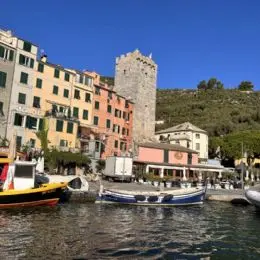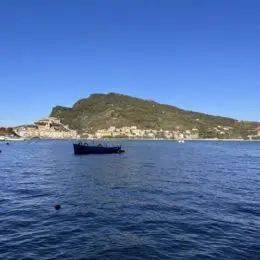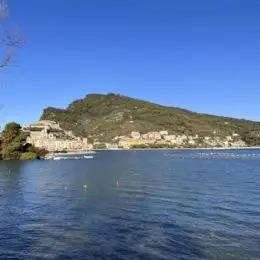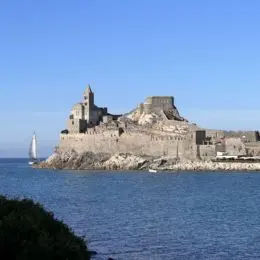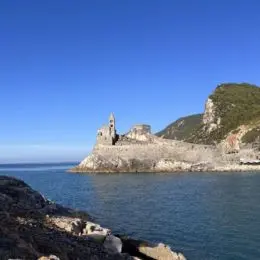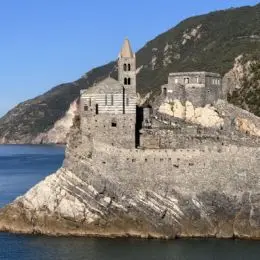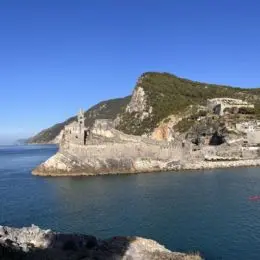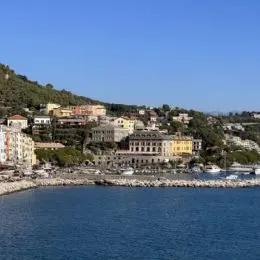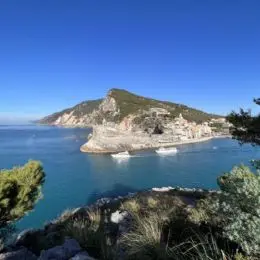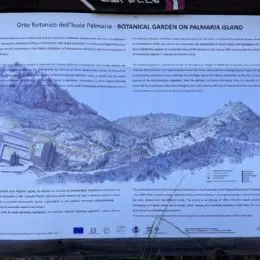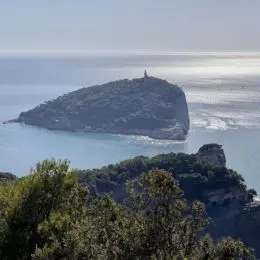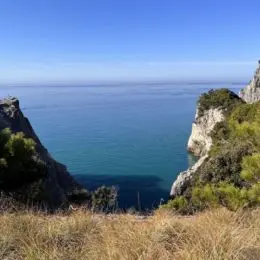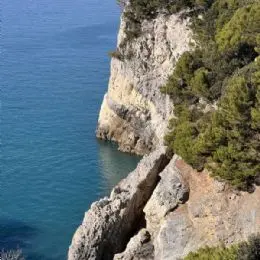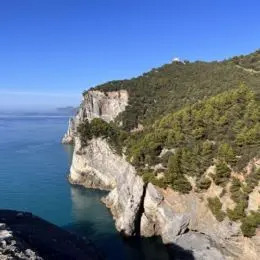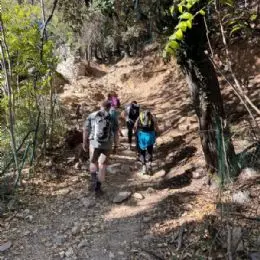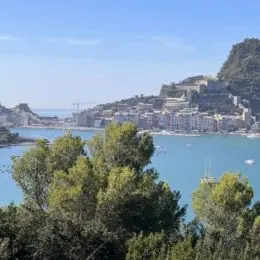Holidays in the Gulf of Poets
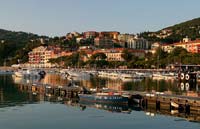 The Gulf of poets has always been a place of inspiration for great artists and writers such as Eugenio Montale , who dedicated one of his most famous works: Ossi di Seppia , Virgilio , Petrarca and many French writers of the caliber of George Sand . A breathtaking view that will not fail to amaze all tourists who decide to spend a beautiful holiday in the Gulf of Poets in Liguria .
The Gulf of poets has always been a place of inspiration for great artists and writers such as Eugenio Montale , who dedicated one of his most famous works: Ossi di Seppia , Virgilio , Petrarca and many French writers of the caliber of George Sand . A breathtaking view that will not fail to amaze all tourists who decide to spend a beautiful holiday in the Gulf of Poets in Liguria .
Holidays in Moneglia
It is the last town in the province of Genoa and owes its name to the Romans (from Monilia , jewels), who knew this land at least since the 2nd century BC.
Worth seeing in Moneglia
Moneglia has suffered a past of clashes and conquests, having been a fief of the Counts of Lavagna and then subjected to the Republic of Genoa . The testimonies of this period are the two fortified castles of Villafranca from 1100 (destroyed in the Second World War, now restored) and Monleone , from 1173 (only the ruins of the surrounding walls remain), where today there is a small castle from the early ' 900. The Church of Santa Croce from 1100 preserves a Statue of the Immaculate Conception , perhaps by Maragliano, and a Byzantine crucifix, but the Church of San Giorgio is also worth a visit, with its paintings by Rubens and Luca Cambiaso .
Its beach is renowned as one of the few large beaches in the area and moreover, it has been repeatedly classified as a Blue Flag. The rock that surrounds the landscape, outside the town, forms many hidden coves that jump into the sea, such as the large Vallegrande cliff. On the promontory, the Mediterranean maquis is the host and the paths that run through it (blue paths) connect Moneglia with the inland towns. Finally, in Moneglia, the Norma was written in the nineteenth century by Felice Romani and Bellini .
Holidays in Bonassola
Originally the town of Bonassola was located high up, far from the sea. Feud of the Da Passano , in the twelfth century, it was ceded to the Republic of Genoa and, two centuries later, the inhabitants moved to the sea. Being a village without fortifications, it was often plundered by pirates and in 1560, after a serious raid, the castle was built of which today two towers remain and in 1569 the Cumpagnia de Bonassolla was founded, whose purpose was to redeem who had been taken prisoner by pirates.
Next to the castle, there is the parish church of Santa Caterina , from the 16th century but transformed in the Baroque era, which contains the ex-votos. To the west of the Gulf of Bonassola is the Chapel of the Madonna della Punta , dating back to the 17th century, which can be reached via a path that borders the sea from the old railway. From the same road you can reach the Salto della Lepre , a large rock overlooking the sea.
Holidays in Levanto
Levanto, in history, had several feudal lords before moving to Genoa in 1229. The first to mention it in a document was Barbarossa , in 1164, with the name by which the Romans called it, Ceula . However, the importance of Levanto did not die out in the Middle Ages, in fact, over the centuries, it was captained and declared a city by Napoleon's government in the nineteenth century. During Fascism, it was discovered by tourists and some Liberty villas that arose in the area in those years date back to that period, later the winding and harsh road that must be taken to reach it discouraged most, such as the Agnelli family , who once came here on vacation.
To see in Levanto
In the 12th century, in Piazza Cavour , where the Town Hall stands today, there was the convent of the Poor Clares with its pink portico. The Loggia del Comune , in Piazza del Popolo, with its theory of medieval arches, dates back to the 13th century and, on the same square, the Restani house with its mullioned windows and three-mullioned windows, belongs to the same period. A beautiful example of thirteenth-century Ligurian Gothic is the Church of Sant'Andrea from 1232 but rebuilt in 1615, beyond which you go up, then, to the Malaspina Castle , which belonged to the feudal lords of Lèvanto and today is a private residence. Next to Sant'Andrea , the permanent exhibition of medieval culture preserves objects from the seafaring and traditional Ligurian life.
For hiking lovers there are paths to follow, of which the most famous is the one in the direction of Punta del Mesco , but also those for Bonassola and Montale , where the medieval Pieve di San Siro is preserved.
Having fun in Levanto
Paradise for surfers, Levanto attracts sea riders from all over Italy for its famous long wave, which when it occurs is double the height of a person (double over head).
Towards Punta del Mesco then, where the protected area of the Cinque Terre National Park begins, it is possible to dive only through private dives.
Holidays in Portovenere
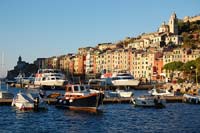 Portovenere is a fortified village by the Genoese in 1113, so called because there was a temple dedicated to Venus : the legend, in fact, tells that the Goddess of love came to rest here conquered by the beauty of the territory, a rocky peninsula that is reflected in the sea.
Portovenere is a fortified village by the Genoese in 1113, so called because there was a temple dedicated to Venus : the legend, in fact, tells that the Goddess of love came to rest here conquered by the beauty of the territory, a rocky peninsula that is reflected in the sea.
To see in Portovenere
To visit, the door of the walls, on which you can read Colonia januensis 1113 ; above the gate, the arch with the town's coat of arms (three towers on the rocky slope) and, from the same period, the medieval capitular tower.
Portovenere has the characteristic alleyways and is made up of stairs that descend to the sea like the stairways of chapter I and II that once descended to the sea: now they end on the calata, the town's waterfront.
Kept in the 12th century collegiate church of San Lorenzo, there is the image on parchment (14th century) of the White Madonna , patron saint of the village; from the churchyard of San Lorenzo you enter the Doria Castle , finished in the 16th century but dating back to 1116, in history it was also used by Napoleon as a prison, today it often hosts exhibitions.
Via Cappellini (or carruggio), ends in Piazza Spallanzani , and above, at the top of the promontory is the Church of San Pietro (12th century), an example of Genoese Gothic architecture, built on the remains of the Portus Veneris . From the Esplanade of San Pietro you go down to the Grotto of Lord Byron , where a plaque commemorates the famous crossing of the English poet from Portovenere to Lerici.
In front of Portovenere the limestone islands Palmaria , Tino and Tinetto have been a UNESCO World Heritage Site since 1997. Palmaria is the largest, reachable also by swimming from Portovenere, Tino welcomes tourists and visitors only on 13 September for the feast of the patron, as a military garrison like Tinetto , which houses the remains of a 5th century hermitage.
Events in Portovenere
On 17 August, during the Feast of the White Madonna , over 4000 torches are lit, from the Church of San Pietro to the sea, creating an image that is nothing short of suggestive. The town is decorated with flowers and drapes and the celebration ends with the procession carrying the effigy of the White Madonna from the Church of San Lorenzo to that of San Pietro . A ceremony that attracts many tourists and onlookers by land but above all by sea, from the Cinque Terre to Versilia .
Holidays in La Spezia
The city, today the provincial capital, descends from a medieval village owned by Genoa , until Napoleon in 1809 made it a military port and a maritime prefecture . The Savoy then, from 1860 continued the Napoleonic work and La Spezia became the military port of the Kingdom, an example of a new city: the streets and the characteristic alleys were widened, and the railway to Parma was built. In 1899 the Umberto I district was born and between 1920 and 1930 the neorealist and rational buildings were built.
Worth seeing in La Spezia
The former Cathedral of Santa Maria Assunta , in Piazza Beverini, born in the twelfth century but subsequently remodeled until the twentieth century in neo-Romanesque style, preserves a terracotta by Andrea Della Robbia .
In via del Prione, the Diocesan Museum and the Civic Museum of ethnography and anthropology dedicated to the history of the Cinque Terre and Lunigiana, the Museum of ancient medieval and modern art "Amedeo Lia" , with many works including paintings between the 13th and the fifteenth century (Pontormo, Tiziano, Raffaello) but also objects and furnishings and numerous archaeological finds.
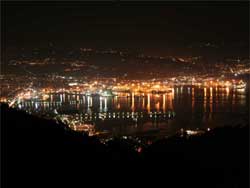 In 1200 the Castle of San Giorgio was erected, rebuilt in 1371 and enlarged in the following centuries, which today houses the Archaeological Section of the Ubaldo Formentini Museum with works from the Luni site, stele statues from Lunigiana and finds from the necropolis in the area.
In 1200 the Castle of San Giorgio was erected, rebuilt in 1371 and enlarged in the following centuries, which today houses the Archaeological Section of the Ubaldo Formentini Museum with works from the Luni site, stele statues from Lunigiana and finds from the necropolis in the area.
For lovers of modern art, the Center for Modern and Contemporary Art exhibits works from the biennial of the Gulf National Painting Award .
L 'Arsenal and operates the Savoy in 1869 but rebuilt after the bombings of World War II, houses the Naval Technical Museum of the Navy, made with the finds from the arsenal of Villafranca and preserves, among others, some relics of the battle of Lepanto.
In Viale Italia, the promenade of the city, there is the promenade that preserves a green area that is reflected in the waters: here in front of the Palio del Golfo on the first Sunday of August and, not far away, in Piazza Europa, you can admire the round Cathedral of Christ the King , from 1975.
Holidays in Lerici
It was discovered by the English Romantic poets in the 19th century and has since become a renowned tourist destination, however it still retains the character of a seaside village.
Lèrici, whose name could derive from Portus Erici (from Erice, its founder), in history has been disputed first by the Maritime Republics and then by the Guelphs and Ghibellines for its strategic position.
Later it became an Aragonese fief and emblem of the Risorgimento uprisings.
To see in Lerici
An example of this past is the Castle of San Giorgio which dominates the city on the promontory, overlooking the sea. Built by the Pisans (XIII) and enlarged by the Genoese, today it houses the Geopaleontological Museum , following the discovery of fossils in the area. In addition to the well-preserved medieval village, the Oratory of San Rocco is worth a visit, with its Baroque façade and Gothic bell tower, which houses sixteenth-century paintings.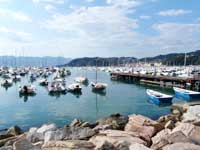 The Church of San Francesco , built on a thirteenth-century but seventeenth-century building, houses numerous altarpieces including works by Jan Miel and Anton Maria Maragliano .
The Church of San Francesco , built on a thirteenth-century but seventeenth-century building, houses numerous altarpieces including works by Jan Miel and Anton Maria Maragliano .
North of Lerici, the Borgata di San Terenzo preserves a Genoese castle from the 15th-16th century and a beautiful beach. Villa Magni was the residence of the poets PB Shelley and his wife Mary and it was during their stay in the heart of the Gulf of Poets that the writer lost his life, shipwrecked after being in Livorno to visit his friend Byron , another famous lover of these lands. Finally, at Villa Marigola , Benelli wrote "La cena delle beffe" .
Having fun in Lerici
In Lerici, water sports are the most frequent, from sailing to snorkeling . The bay, in fact, ventilated but protected, lends itself to sailing and windsurfing , and is often used for regattas, but also for a curious sport that takes the name of canoe polo , where the one who scores the most points wins. paddle. Even diving holds surprises, the area is a sort of small marine archaeological park where loads of ships dating back to the Roman period have been found.
Holidays in Bocca di Magra
This is the last stretch of the harsh coast of the Ligurian Levant, beyond the Magra river , in fact, the rocks give way to wide and soft beaches. The change of environment can be seen both in the Sergiunga beach and in the hills of the hinterland, however the fundamental element in Bocca di Magra is the river, around which the whole town stretches.
In Bocca di Magra , a particular fishing is practiced, the rezzaglio, which consists in being able to catch sea bream and mullet, which try to go up the mouth of the river, with a sack-shaped net; moreover, fish is the protagonist in the homonymous festival in the last week of July.
Like the other areas of this land, this small hamlet in the past has attracted intellectuals and artists, from Pavese to Vittorini , but also Einaudi , Gadda and Bassani .
Worth seeing in Bocca di Magra
Of great historical importance is the site of Luni , not far from Bocca di Magra , which is why it is believed that the port of the ancient Roman city was built here. Luni was founded in 177 BC and had a great development as a military base and center of trade, until an earthquake destroyed it in the fourth century. Under the capitolium, which can be visited like the other ruins, stands the National Archaeological Museum of Luni .
Porto Venere e isola Palmaria

